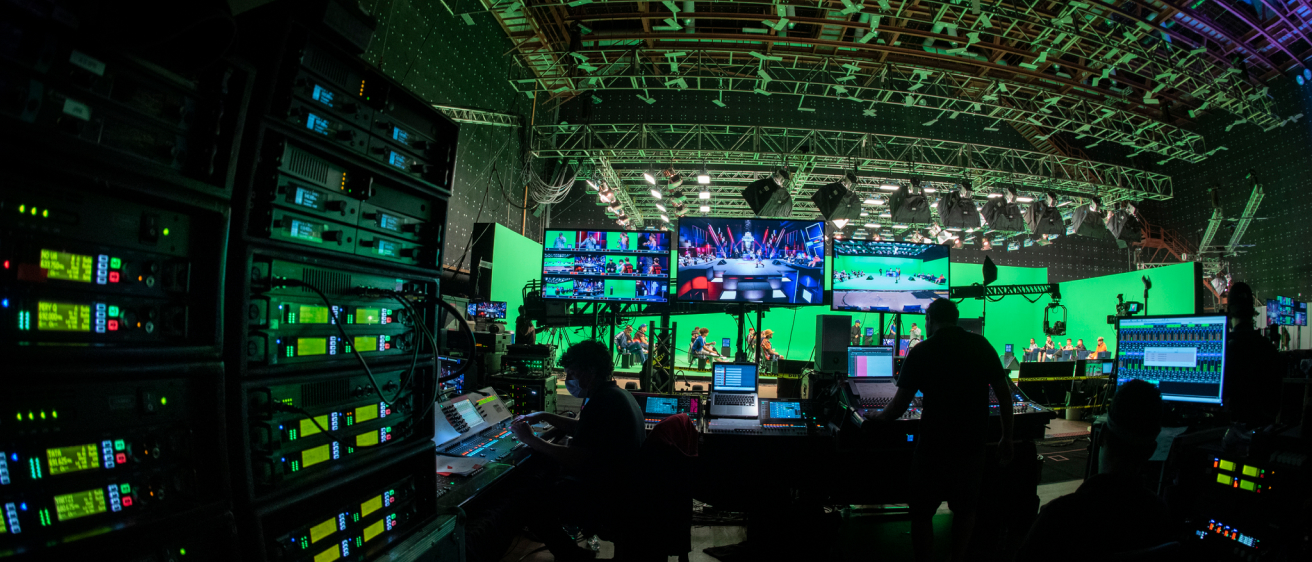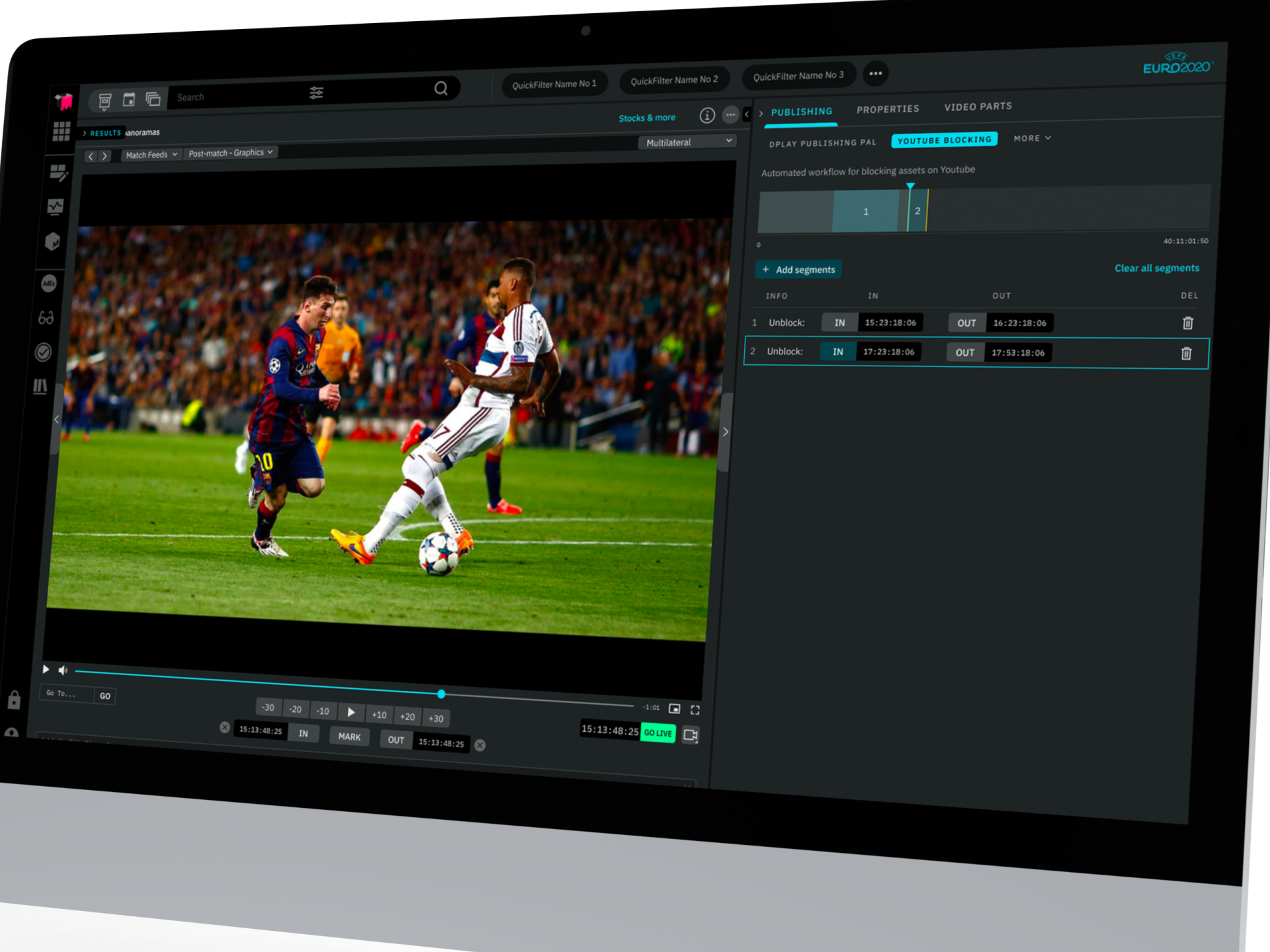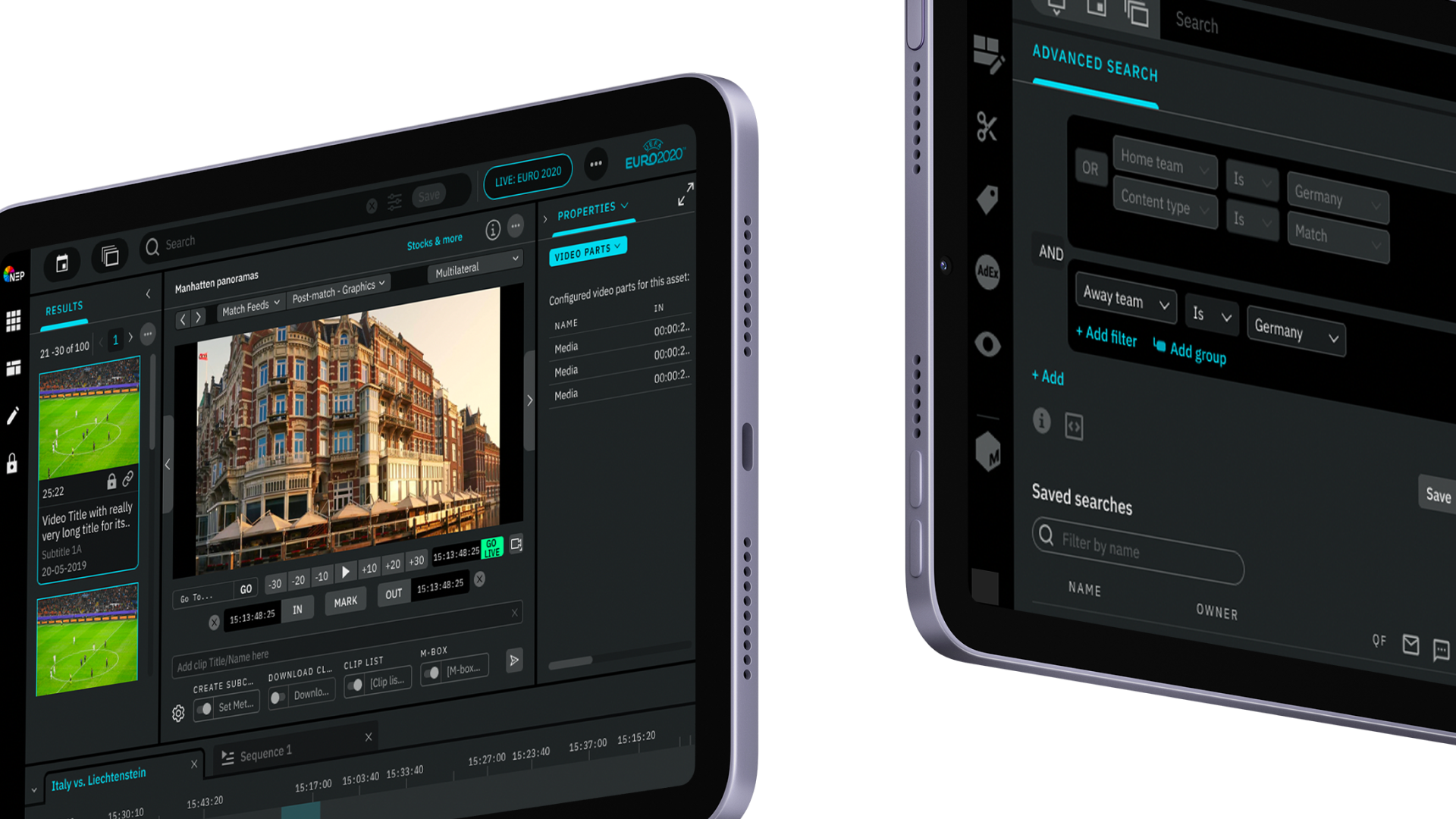

- Redesigning an award-winning Media Asset Management system
- A total UX, UI, design and tech stack overhaul
- Working closely with the client in Norway
- Using React.js with Redux state management
- Capitalising on user experience research to make key decisions
- A six year partnership
NEP Group is the media technology company behind some of the broadcast, live and virtual shows you love most. Its Media Asset Management system, Mediabank, is an industry award-winning platform that gives users the power to share and distribute content anywhere. But it needed a specialist creative engineering partner to give it a reboot.
NEP Group aims to revolutionise the way people experience entertainment, sports, news and more. The way they create and share content. It is a production powerhouse that uses cutting-edge technology, engineers and technical experts to bring broadcast events, live performances and virtual productions to life. That’s the industry introduction – you’re more likely to know its clients; Eurovision, Love Island, The Grammys, Wimbledon. NEP lies behind all of these, and has been revolutionising the industry for years too – the first ever 4K OB truck, the first ever entirely virtual set, the first ever ST2110 broadcast facility. The list goes on.
It’s safe to say that NEP has a history of revolutionary work. So, when existing users asked for an upgraded UX experience on its Mediabank platform, NEP needed its own revolution. Mediabank, an award-winning cloud-based toolbox for sharing and distributing media anywhere in the world, was showing signs of getting left behind by its competitors. Its design, navigation and UX needed refreshing to keep it fresh and its existing features, which had been bolted on, needed to be tightly integrated with a new tech stack. NEP needed a design, UX and technical specialist to help it reimagine Mediabank – so we got the call.
A facelift for the future

Mediabank is what the industry calls a Media Asset Management system (or MAM for short), and with our growing expertise in MAMs, gained with clients like FIFA and UEFA, we were well placed to embark on a total UX and design overhaul of NEP’s Mediabank. The restructure would also involve front and backend development and rebuilding, with a focus on making the application industry agnostic but customisable for any given sector.
To kick-off the project, we first ran a thorough end-to-end audit of the existing platform, taking note of bugs and issues that needed fixing and also features that hit the mark and needed to stay. Using this, our UX and design teams pulled together a variety of routes that showed how the new Mediabank could look and feel. Once NEP had picked one, we began working on an MVP, carefully thinking and designing about each and every feature with best practice UX in mind.
Working on a retained team basis, we took regular trips to Oslo to sit and work closely with NEP’s internal teams. We took interactive prototypes over regularly, to give a taster of our direction and keep client input high. As a creative engineering company, we deliver work as one team, which includes the client. And, from the BBC to NEP, we pride ourselves on creating great client relationships that stand the test of time.

A tech stack built to adapt
We rebuilt Mediabank as a single page web application using React.js with Redux state management. Using rxJS paves the way for reactive programming which, in turn, makes dynamic UI that adapts to user interactions in real-time far easier. Mediabank communicates with its server using a set of REST API endpoints, creating efficiency with data exchanges between the client and the server. We also developed reusable components, collected and documented in Storybook, to streamline the dev process and keep user interfaces clean and consistent.
An end-to-end automated test using Cypress keeps Mediabank tight, validating the whole application and raising standards to the highest level at all times. All of this makes for a powerful tech stack that can deliver sturdy, user-friendly web applications built for scale and future-proofed for years to come.

A partnership built to last
Of course, we already knew what features and tools users needed in Mediabank – our job being to find a way to make them work more efficiently and intuitively – but the project also had its challenges. The existing Mediabank team in Norway had already been working on the product for years and already had established routines. We needed to tread gently but slowly introduce new ways of working and ideas that were easy to get behind, letting the quality of the work do the persuading. We also needed to combine the ideas and team buy-in with extensive user testing, to fine tune the features that mattered most.
Overall, the Mediabank project was a lasting success, culminating in over six years of partnership. The exact statistics on how many millions of megabytes and minutes of footage have been used with NEP’s Mediabank are internal but, take it from us, great relationships never stick unless success follows.

